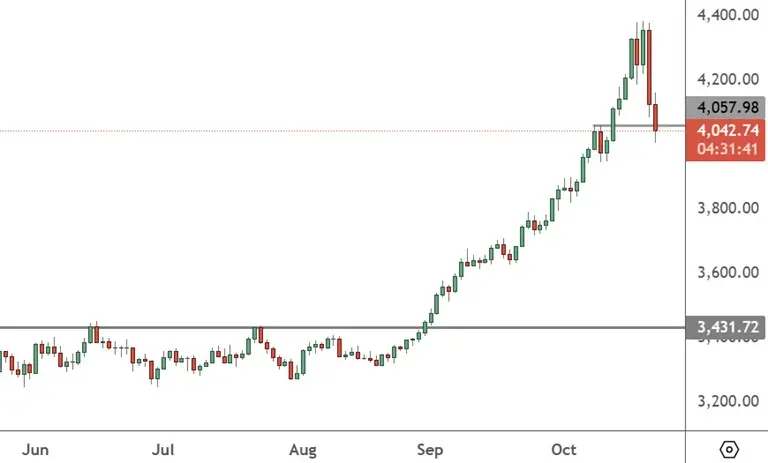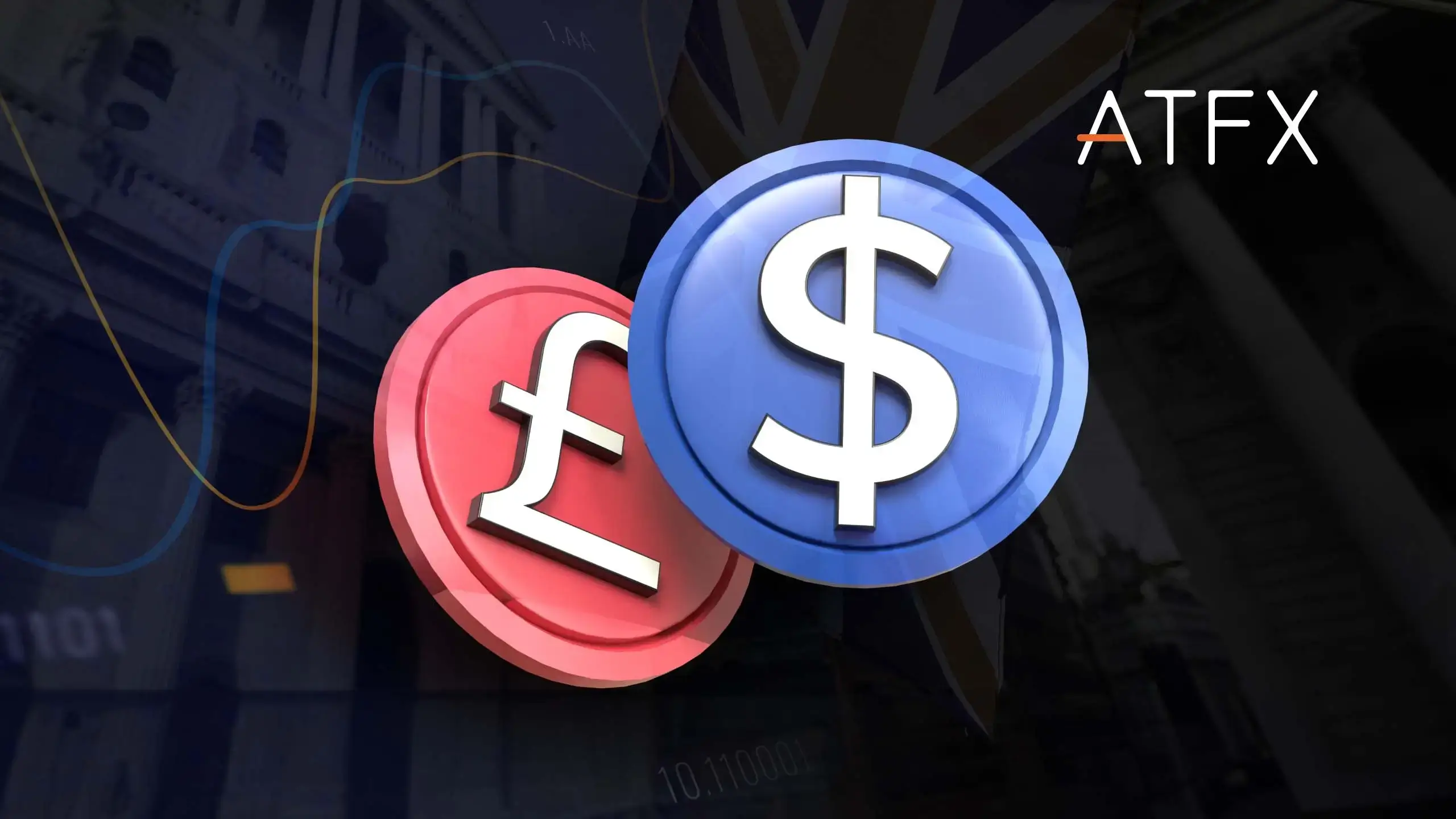Gold’s powerful rally from the $3,431 level saw very limited selling, but that has changed this week.

XAUUSD – Daily Chart
The gold price’s move above $3,431 was a very big breakout, but there was no pause or retest of resistance, and that leaves the precious metal looking for a near-term floor.
Gold dropped by as much as six per cent on Tuesday, marking the biggest fall since 2013. Silver also saw sellers with a seven per cent drop, the largest since 2011.
Analysts are currently looking at the move as a technical “reset” rather than the start of a structural collapse, but also highlights the overbought conditions. Monthly RSIA indicators had reached their highest levels ever.
Ole Hansen, head of commodities at Saxo Bank, said the correction was inevitable after the 31% gains in gold over a nine-week period and a 45% jump in silver over that period.
“Exceptionally strong pre-Diwali demand helped support prices, but with a firmer dollar, risk-on sentiment in equities, and softer Asian physical buying, traders began protecting profits instead of chasing new highs,” he said.
Gary Wagner, analyst at Kitco Metals, said: “The correction was overdue and should not have come as a surprise,” he said. “After such an extended advance without meaningful retracement, a swift and severe reversal was inevitable”.
Silver prices breached the key 2011 highs that we noted this week, around $50, and that will now be the obstacle for a silver market breakout. However, the underlying fundamentals are still strong, with central bank purchases still near record highs at 1,000 tonnes annually.
The World Gold Council recently noted that the buying through official channels now accounts for nearly 25% of total global demand, providing a floor when speculative flows retreat.
The 25% level indicates that the rally is not fully supported by central bank buying, and investors should be cautious about volatility as the market seeks a base.


